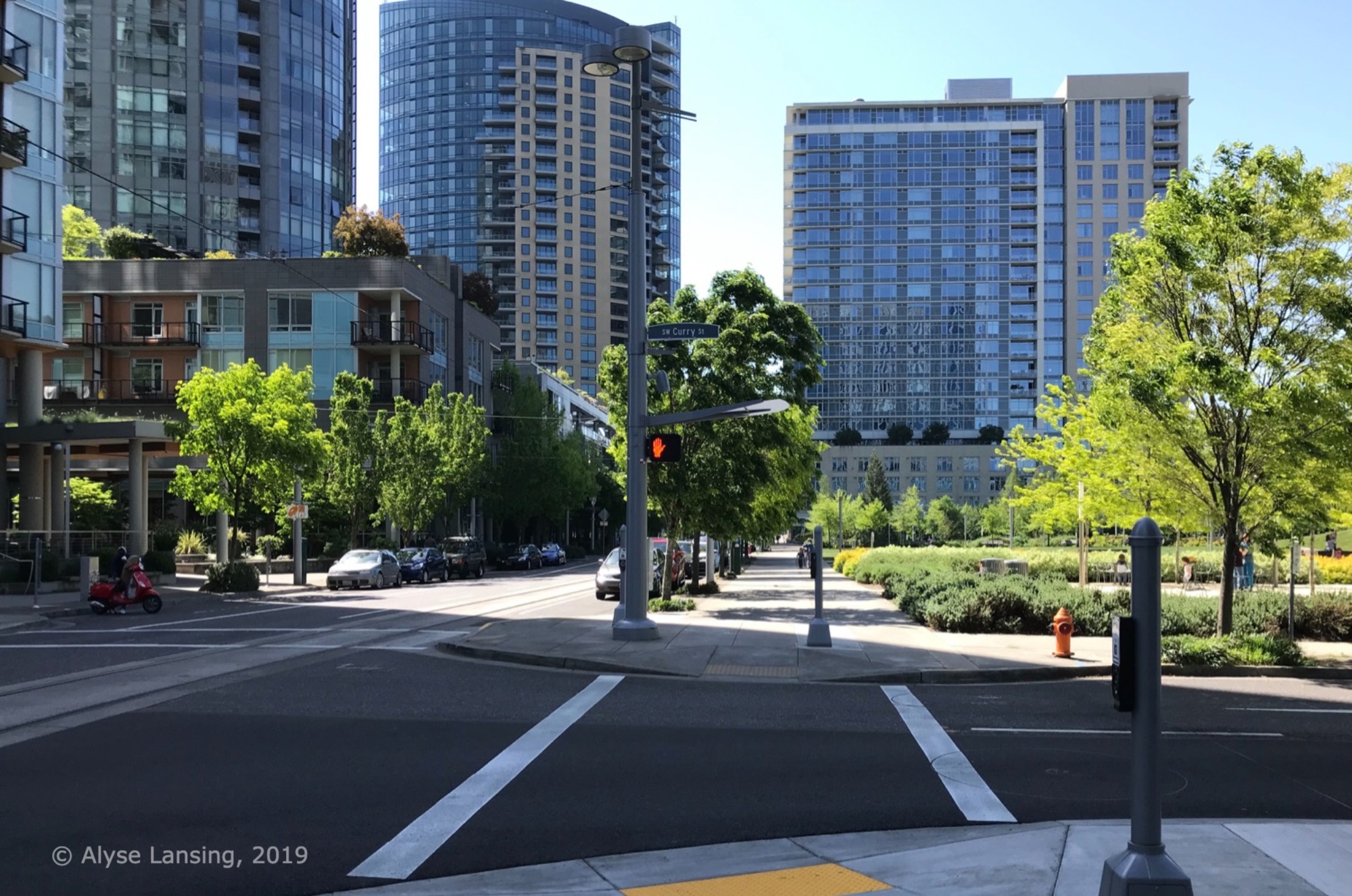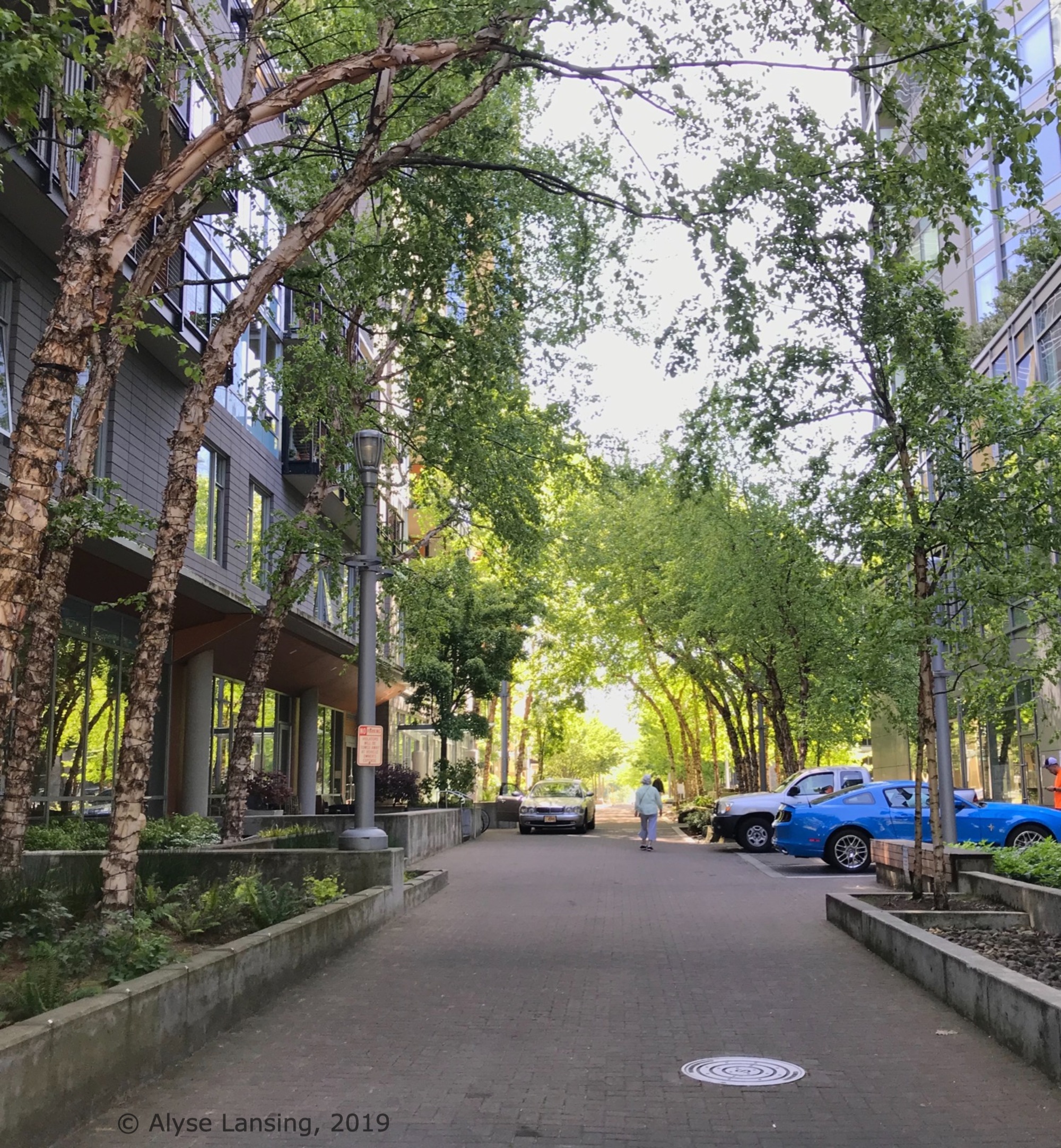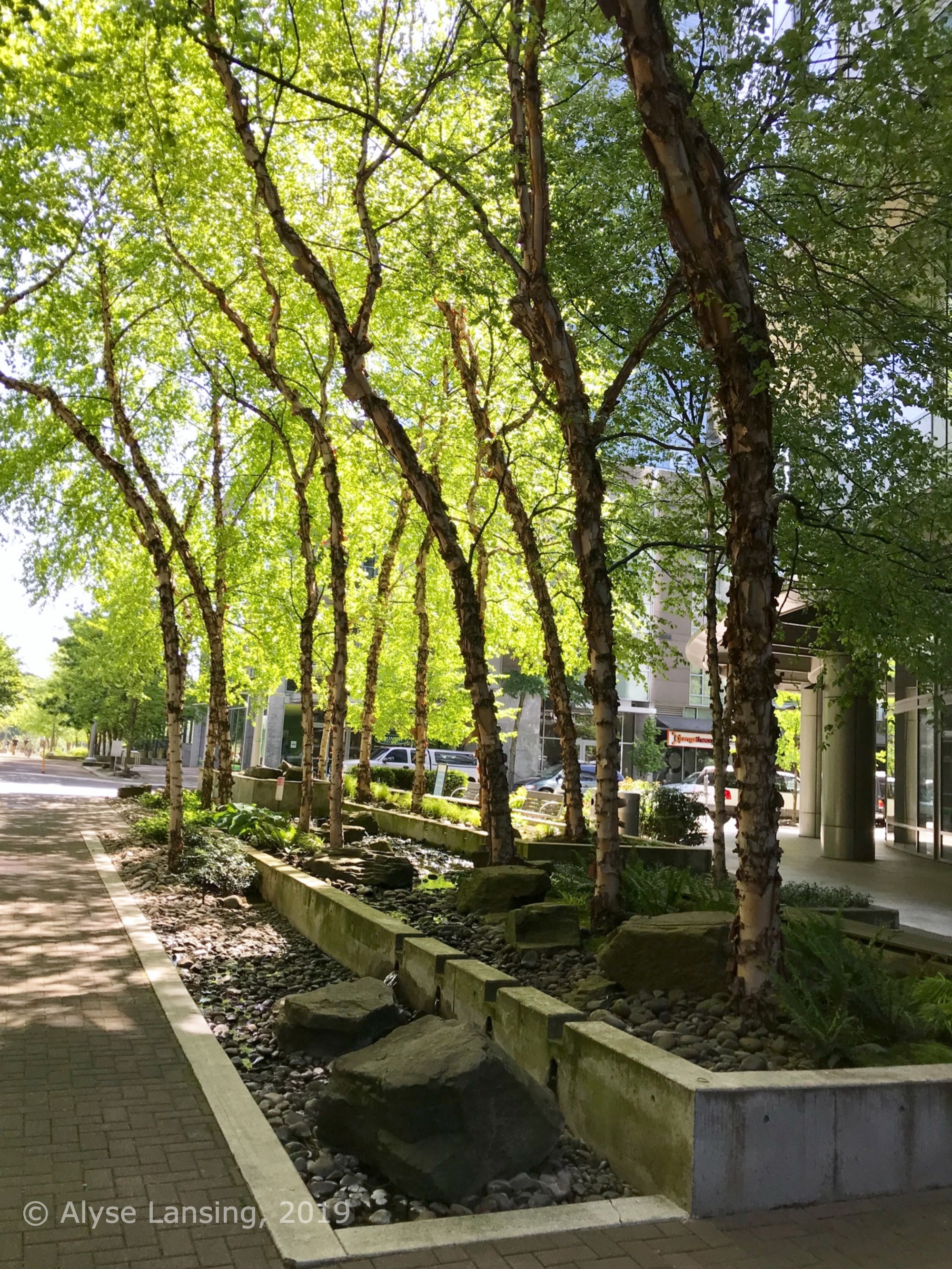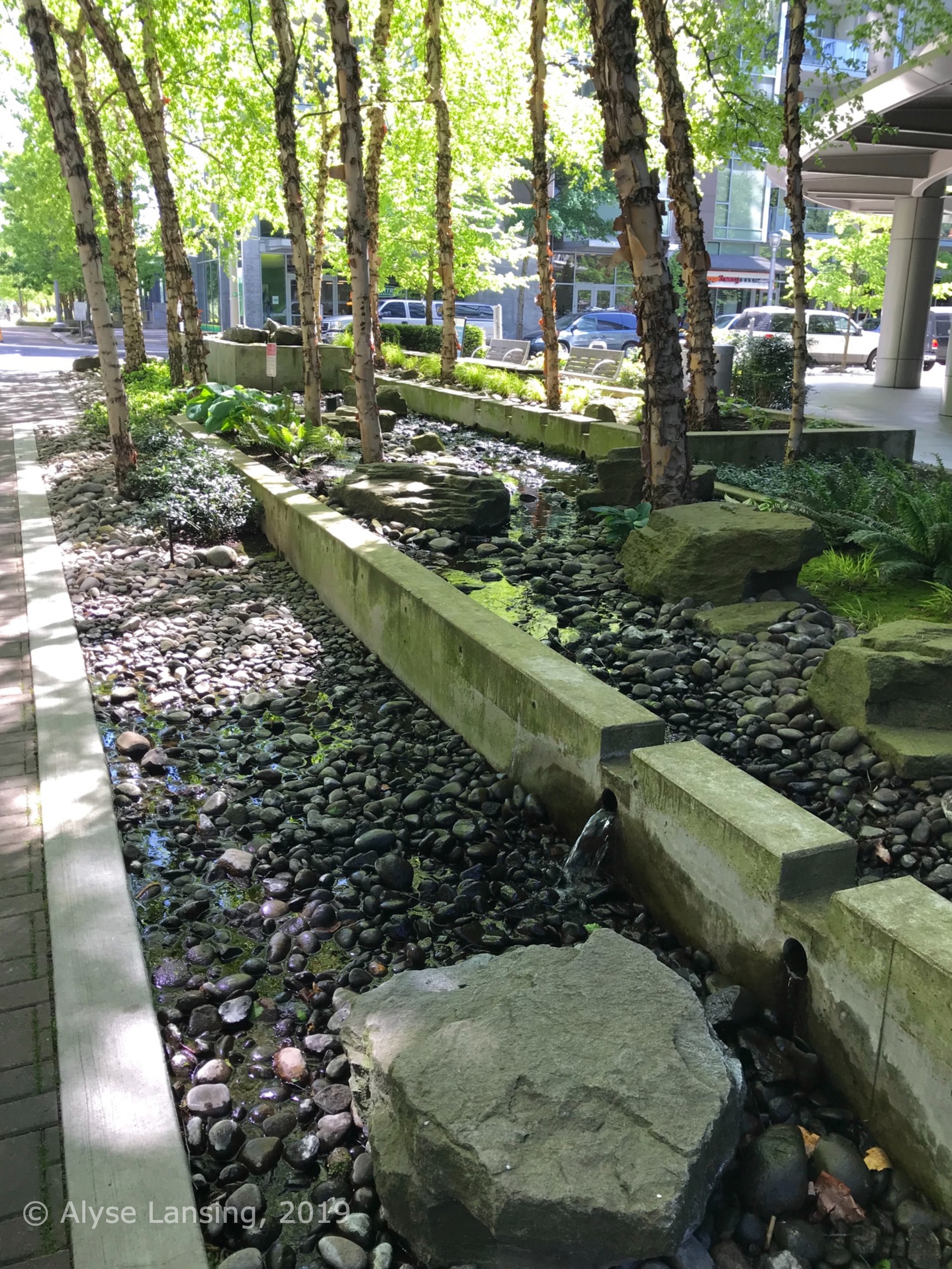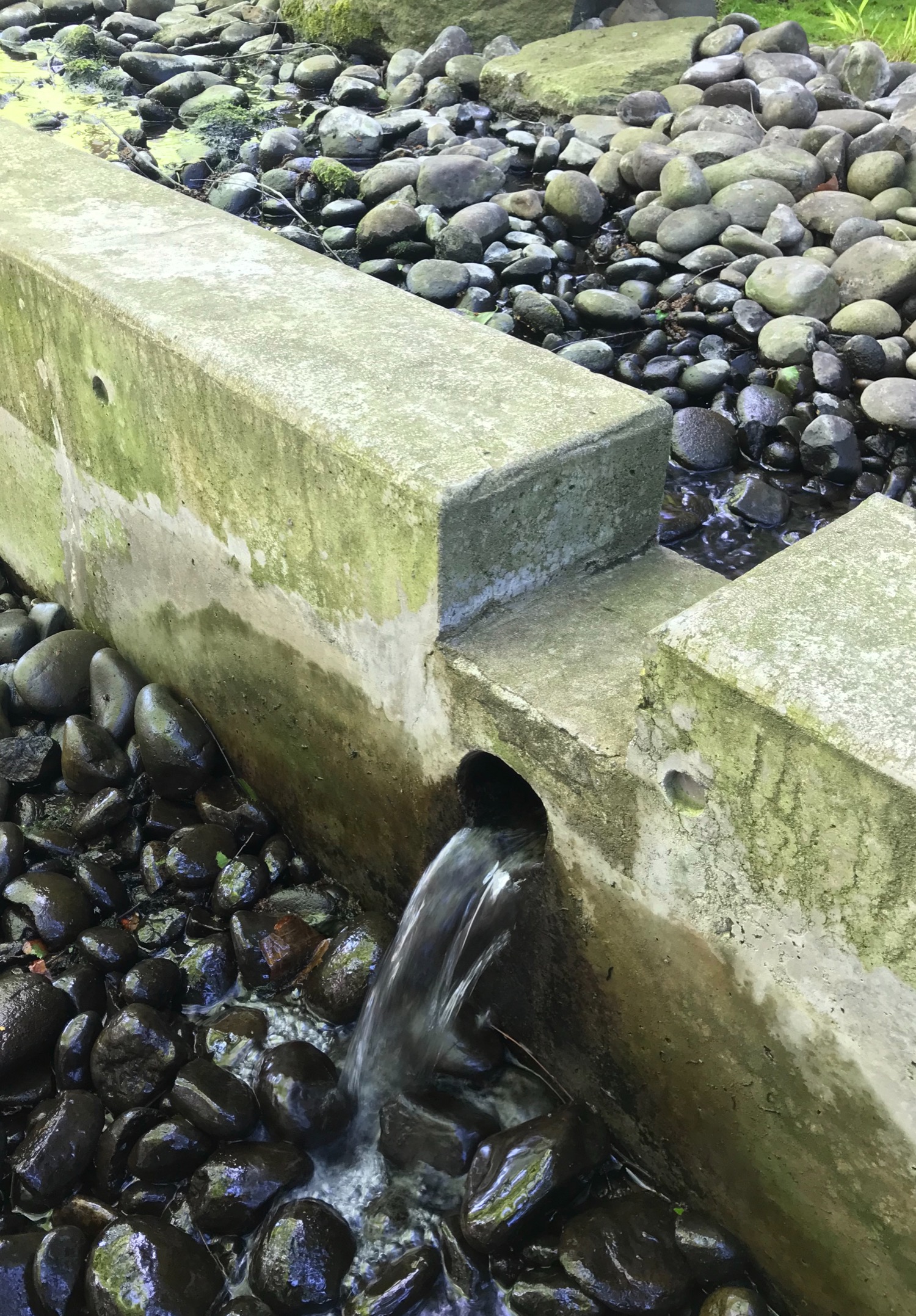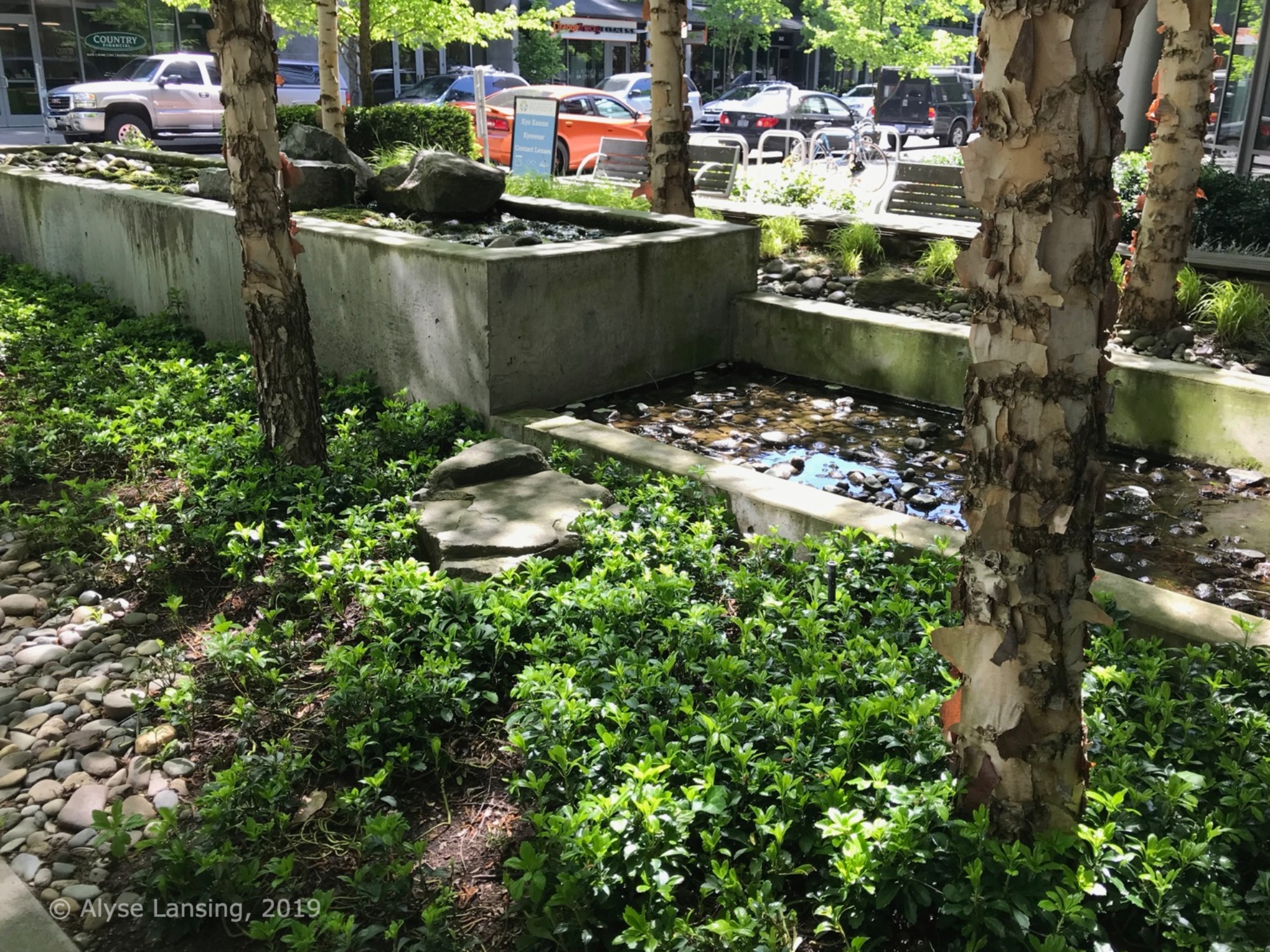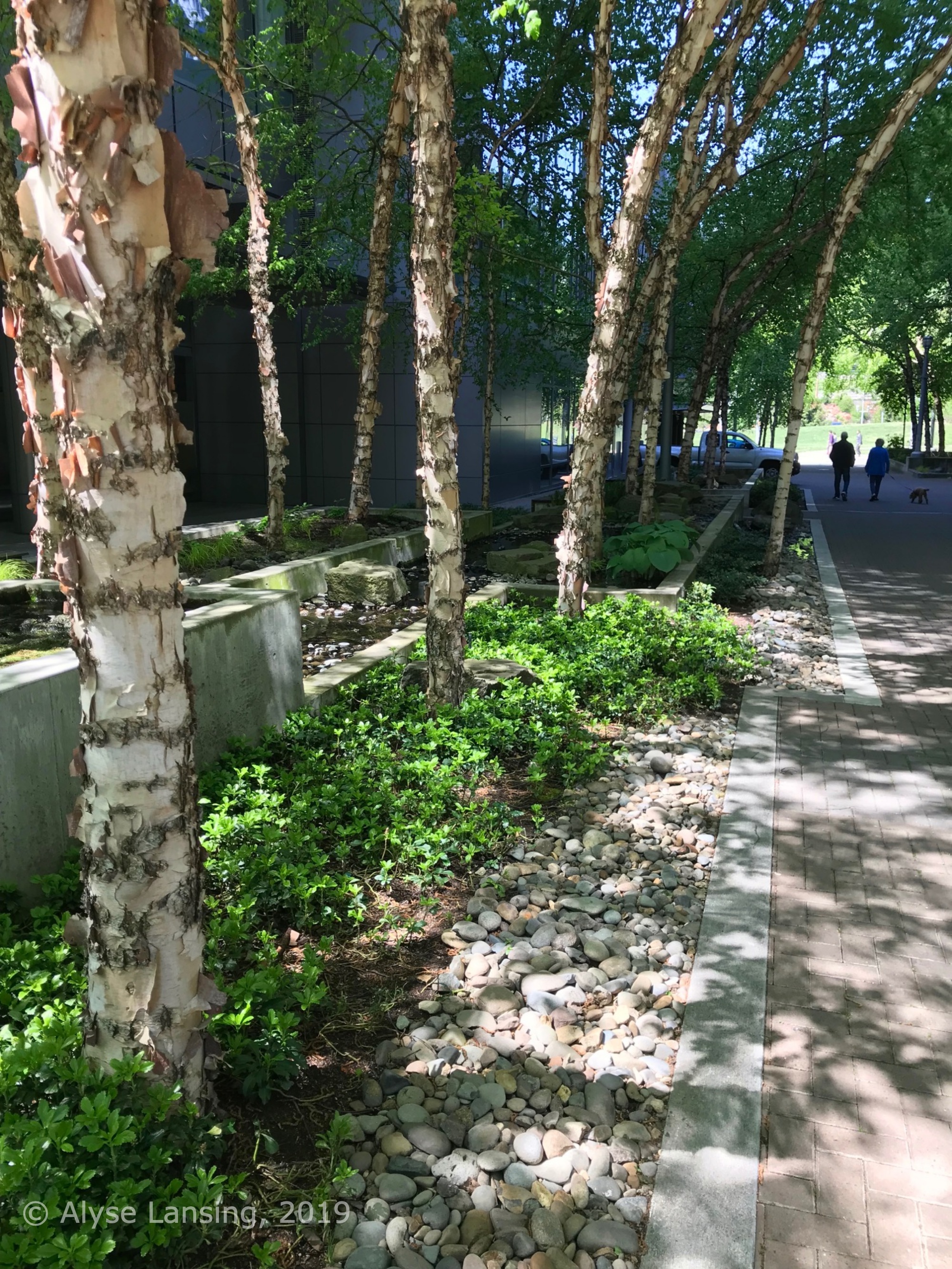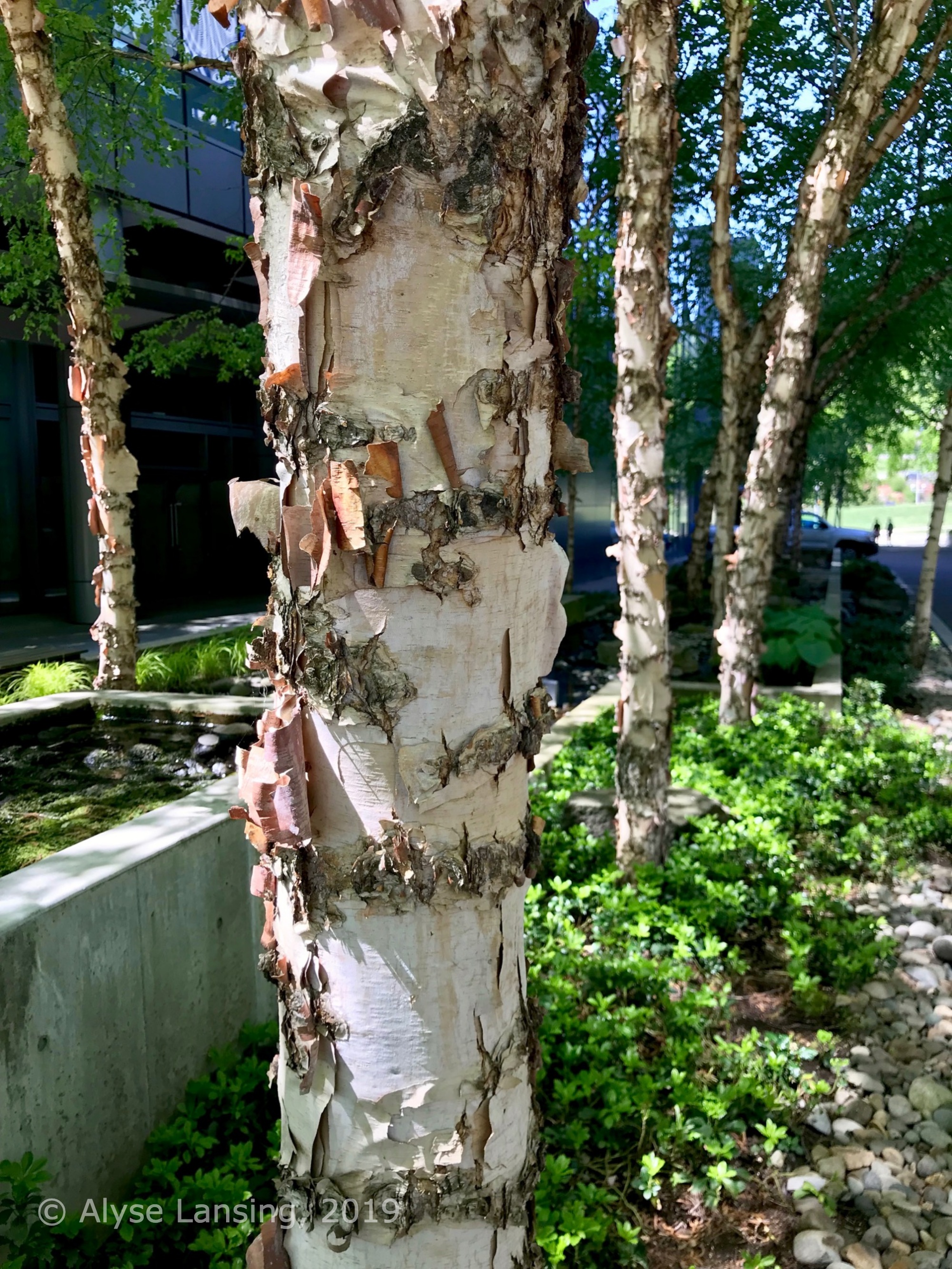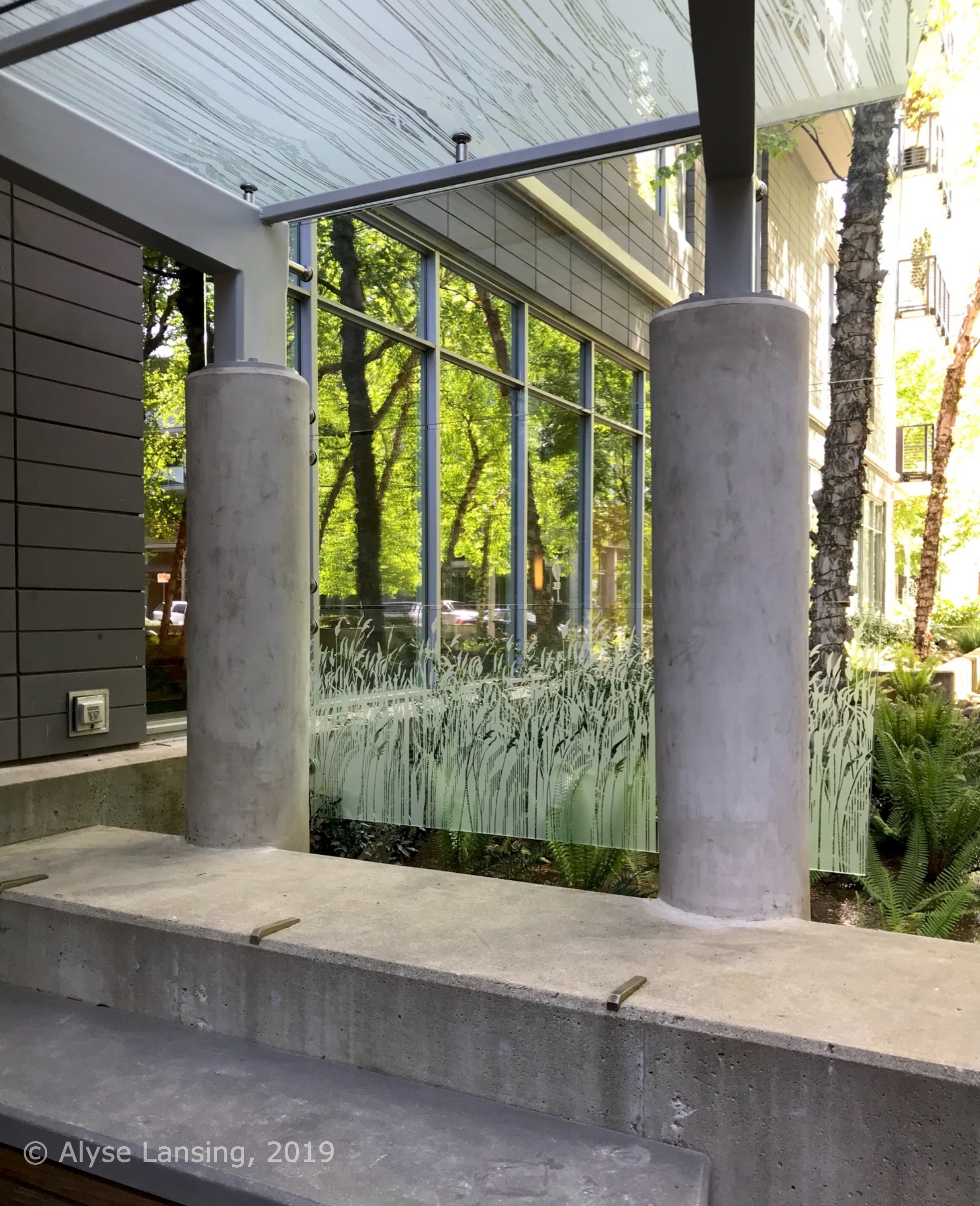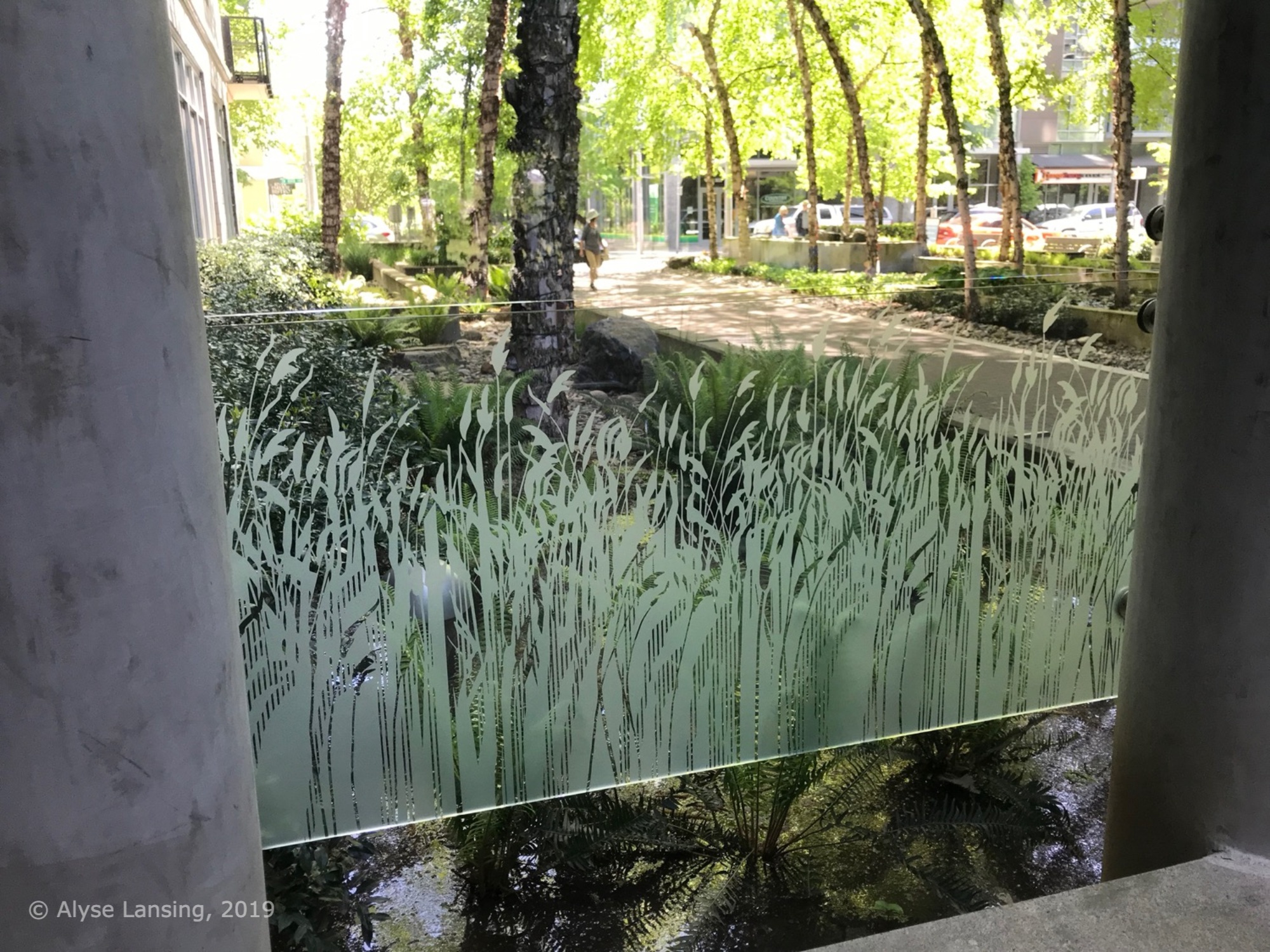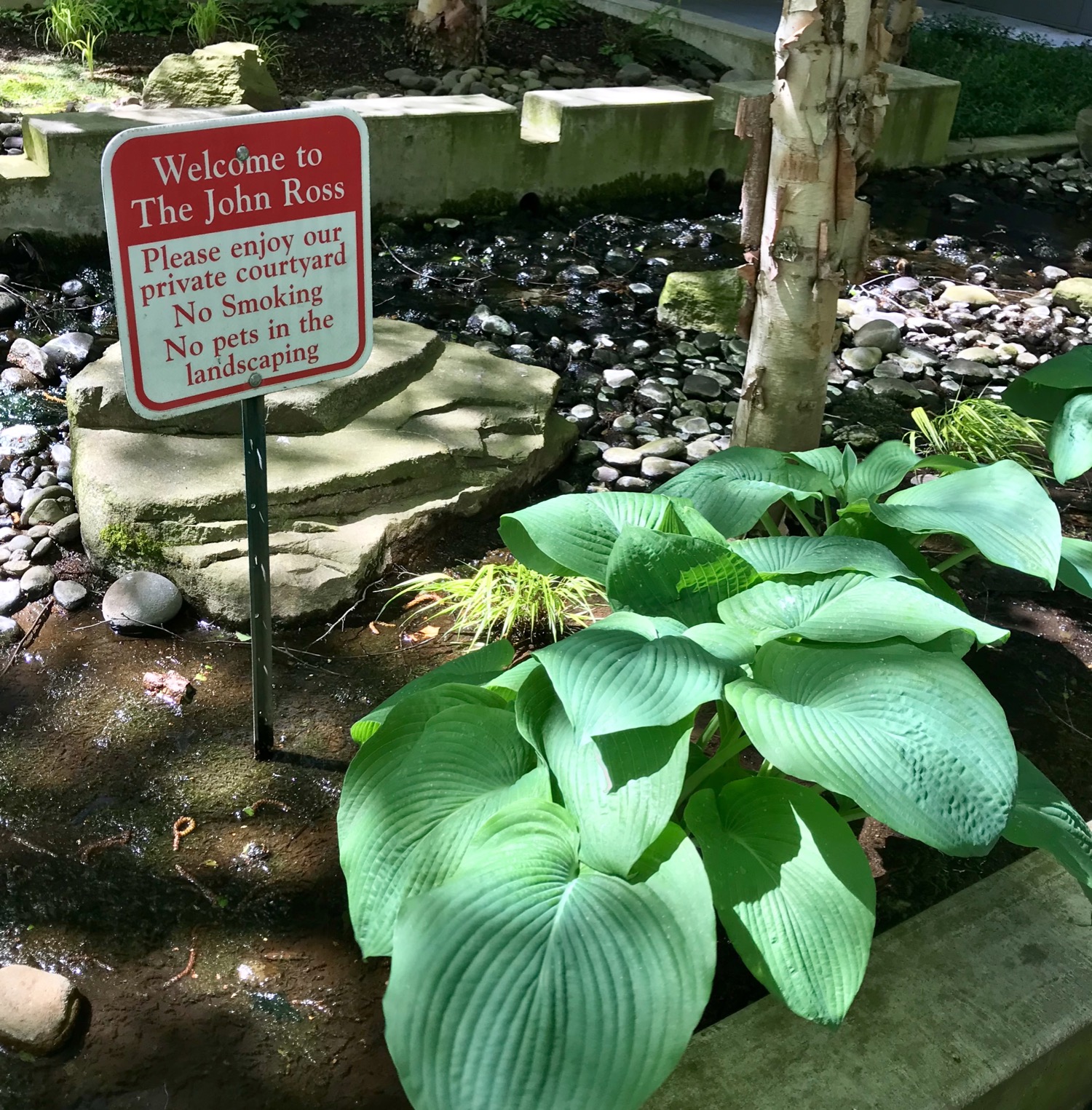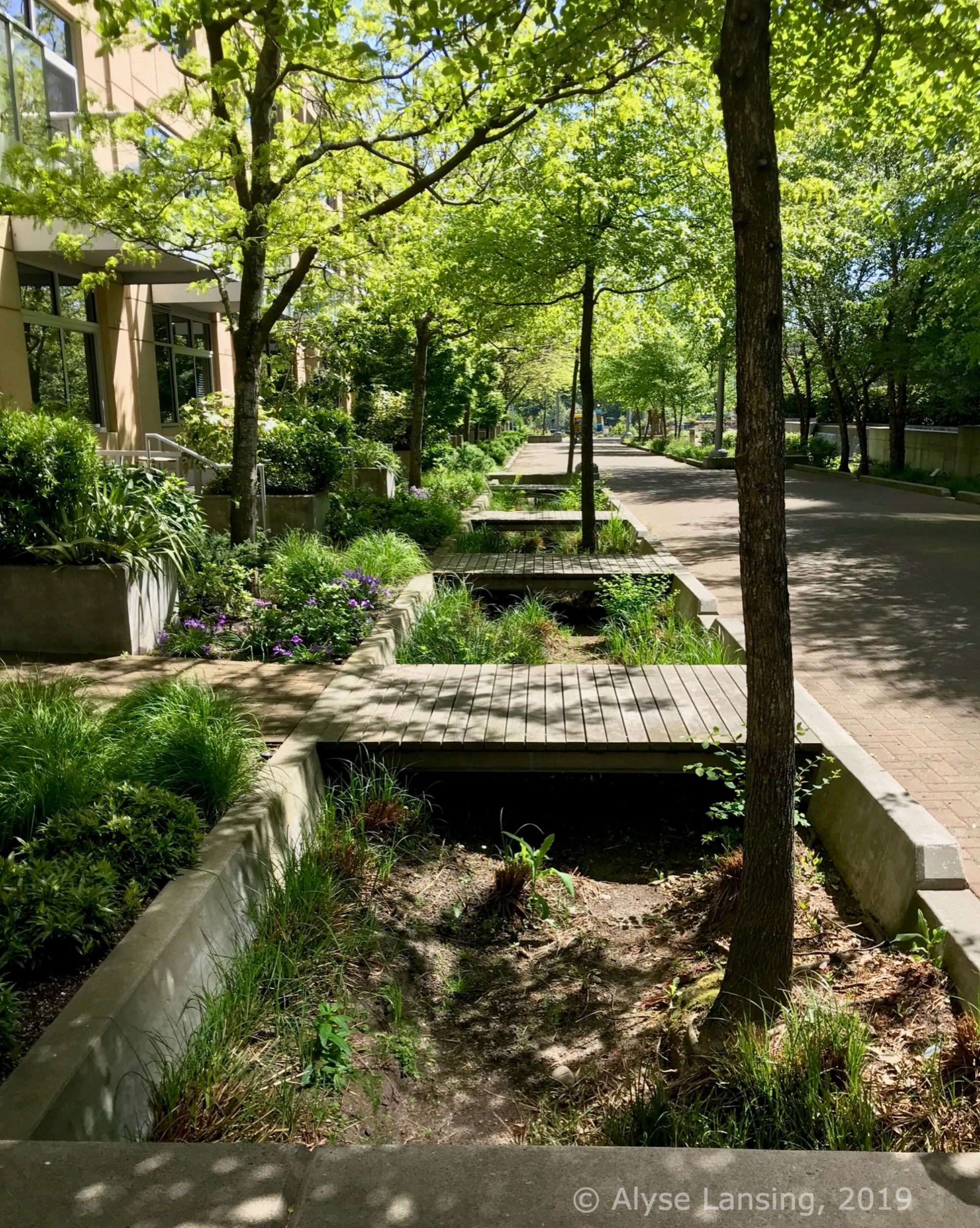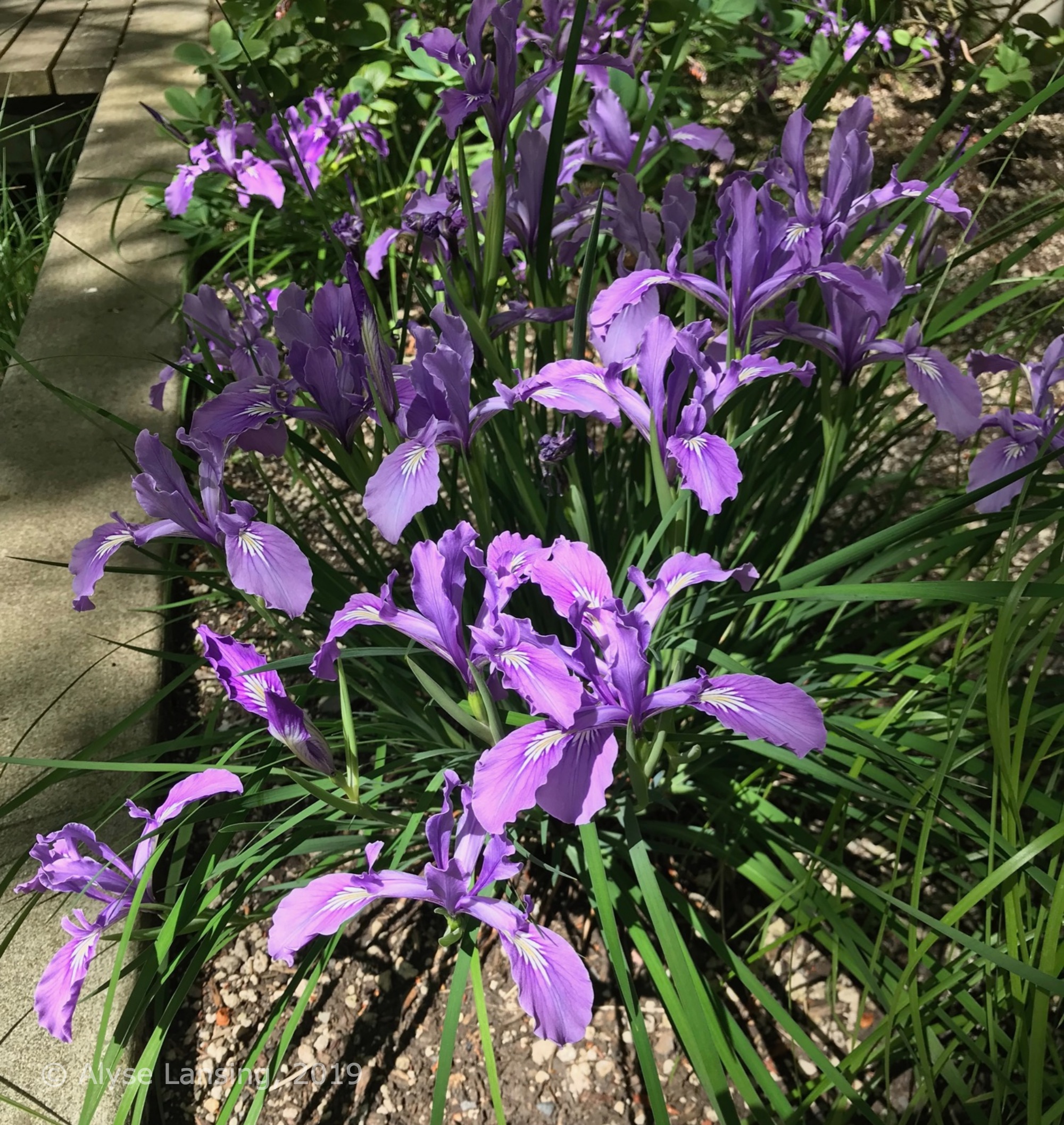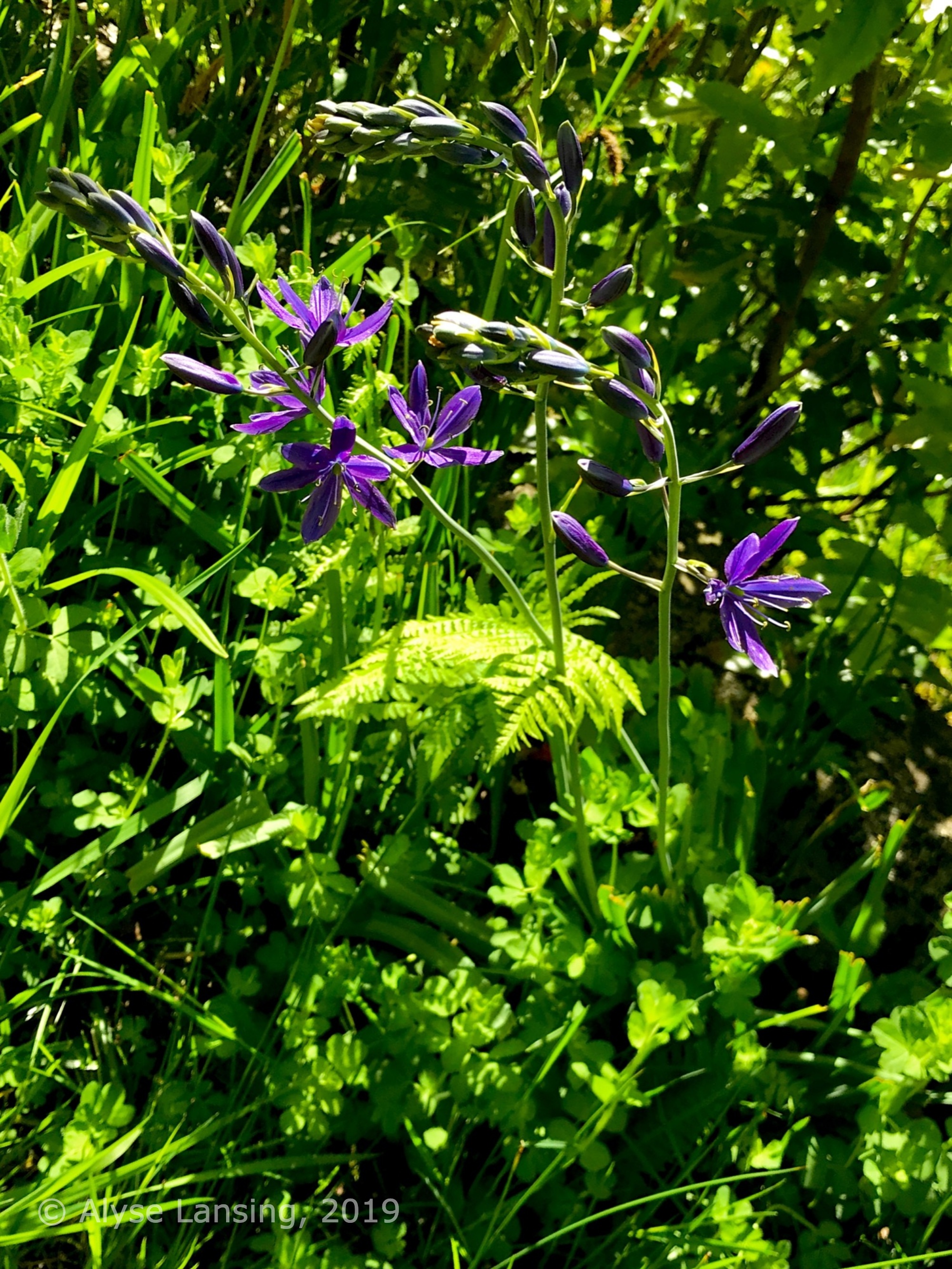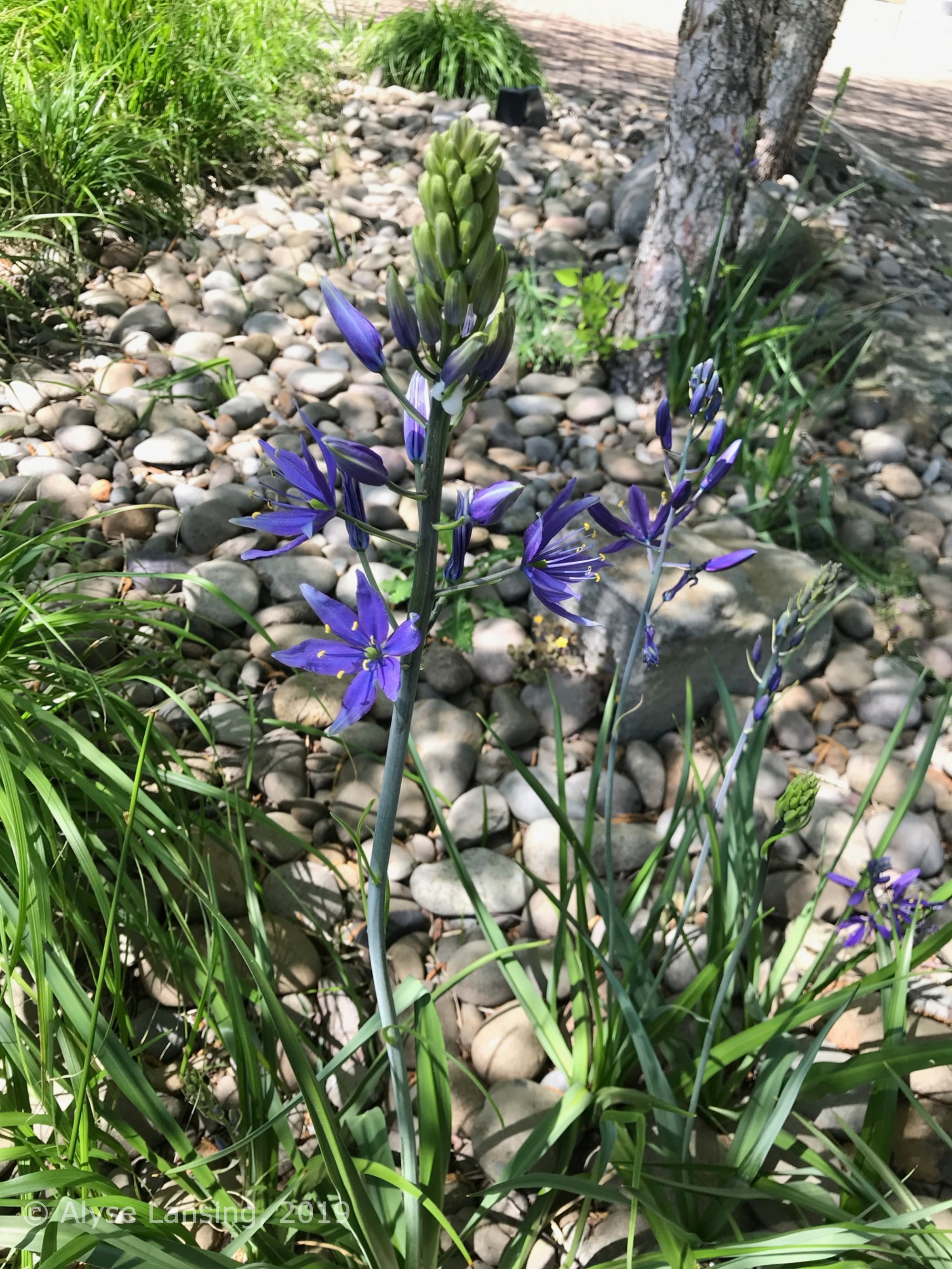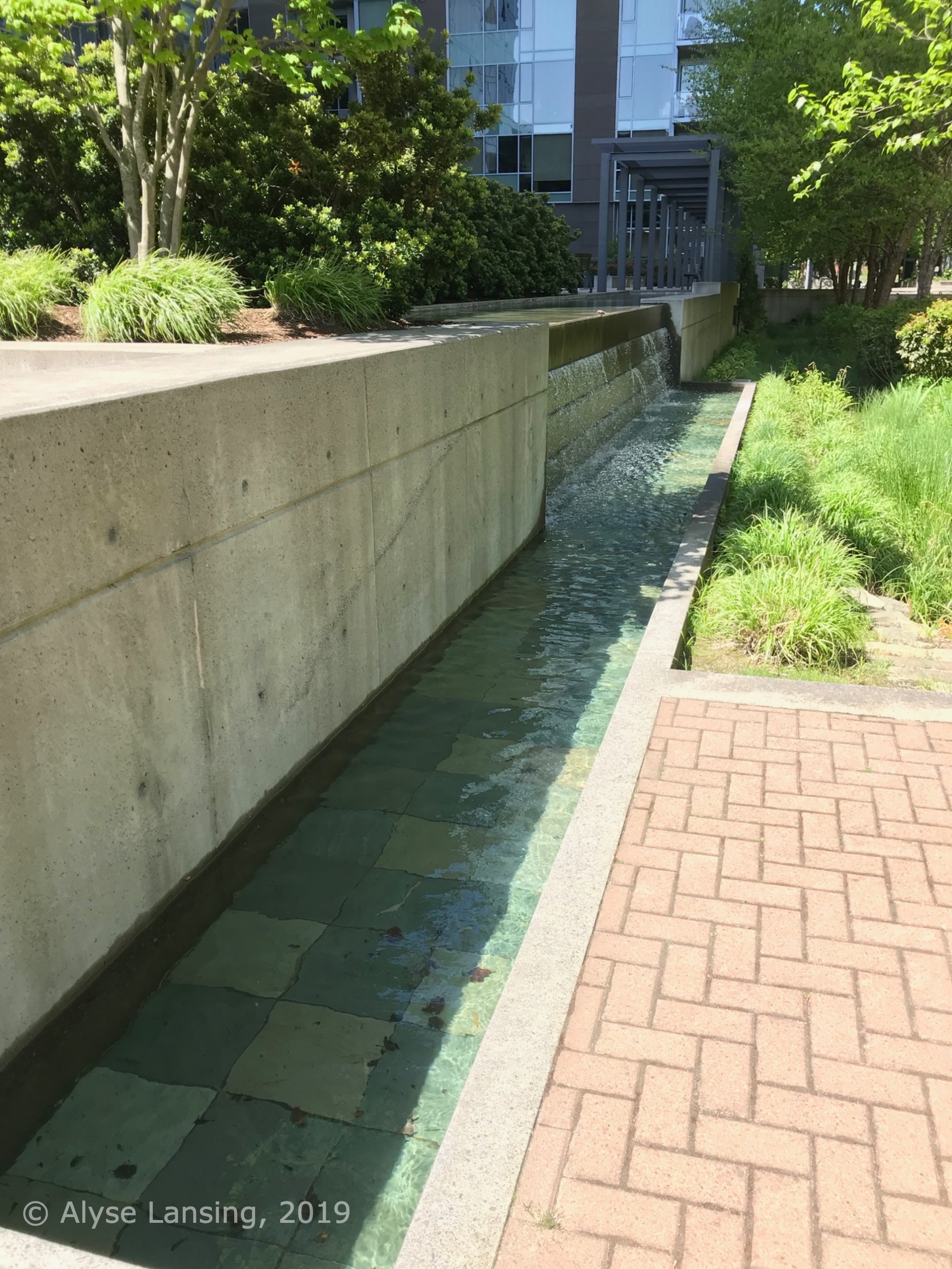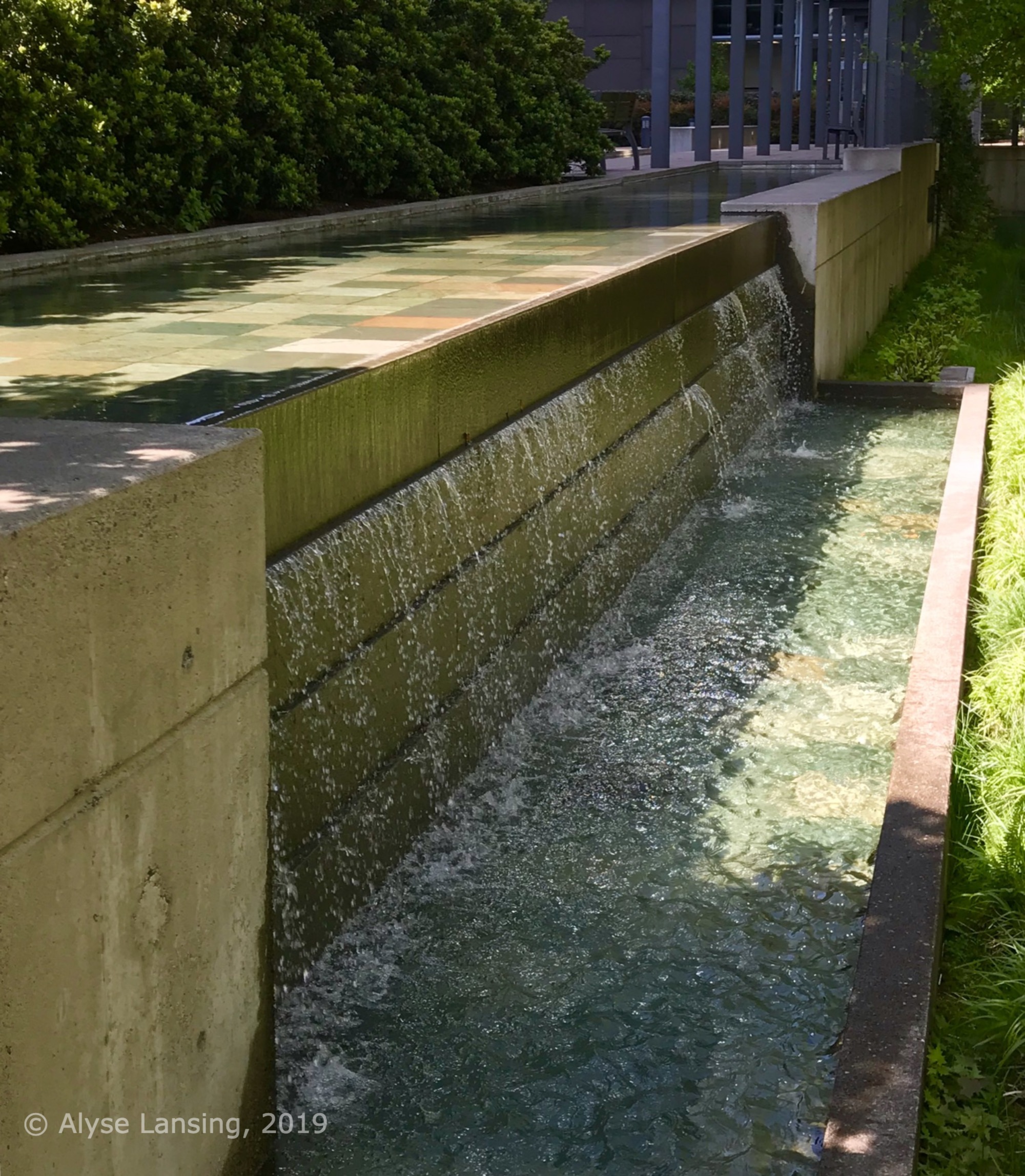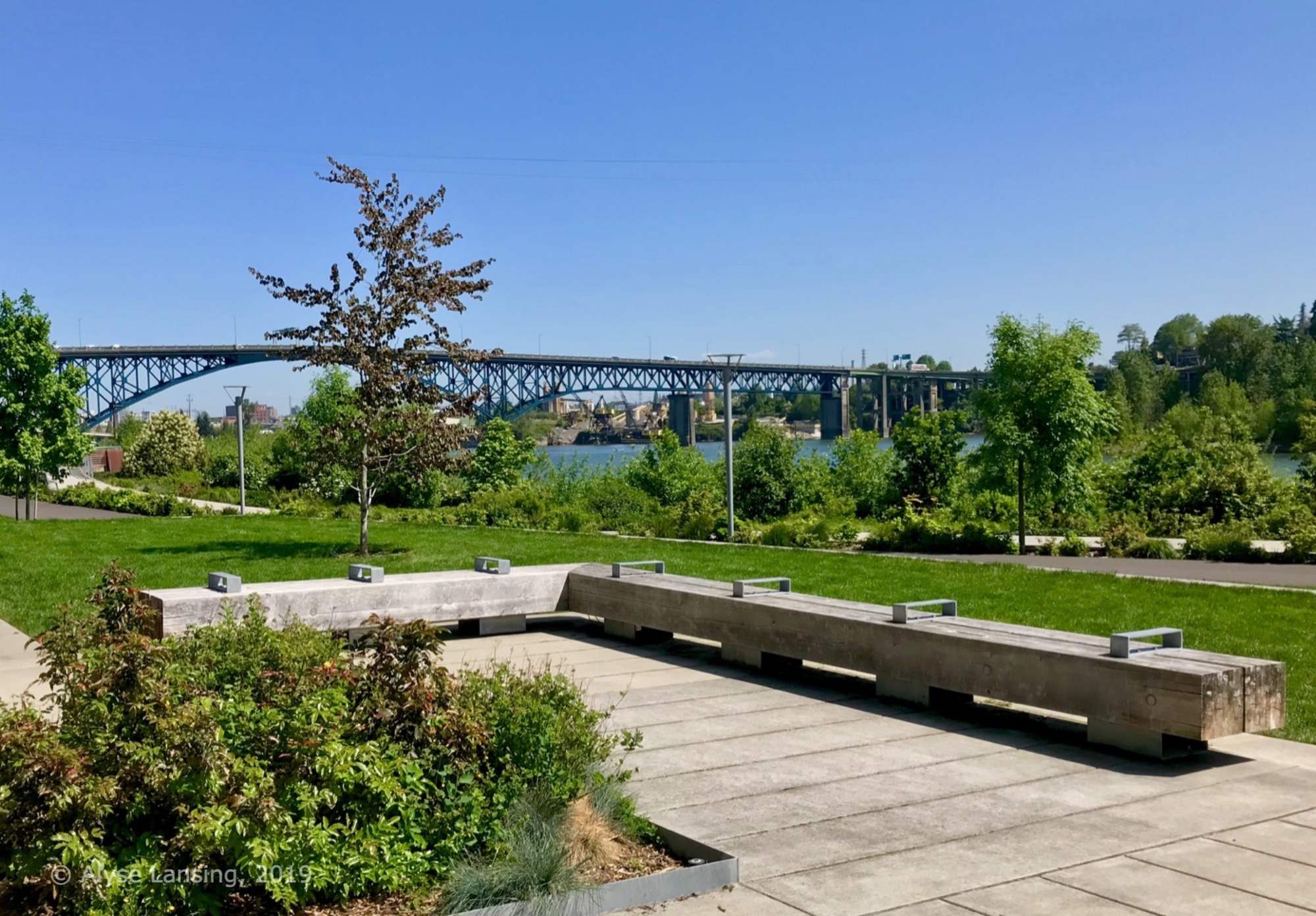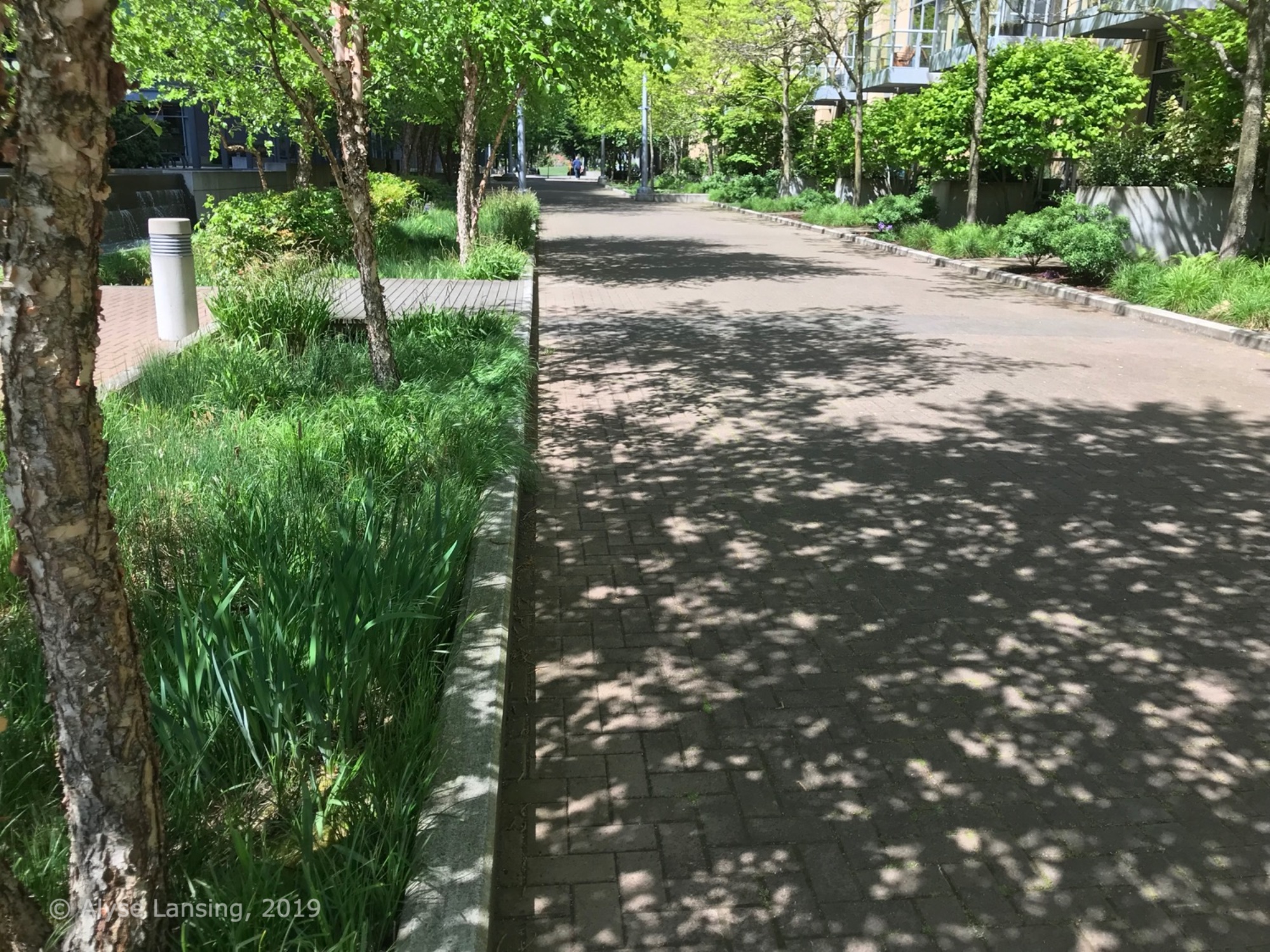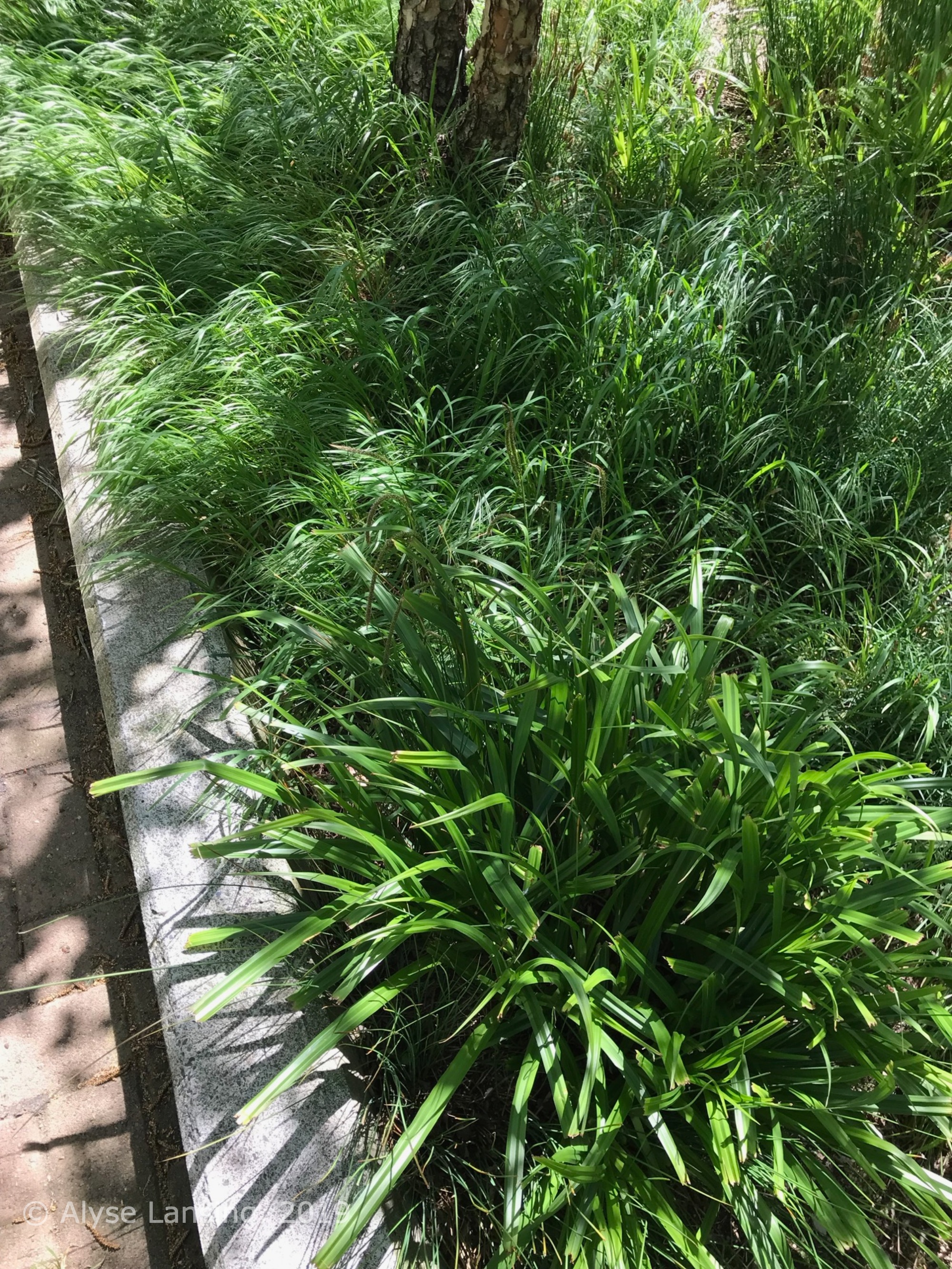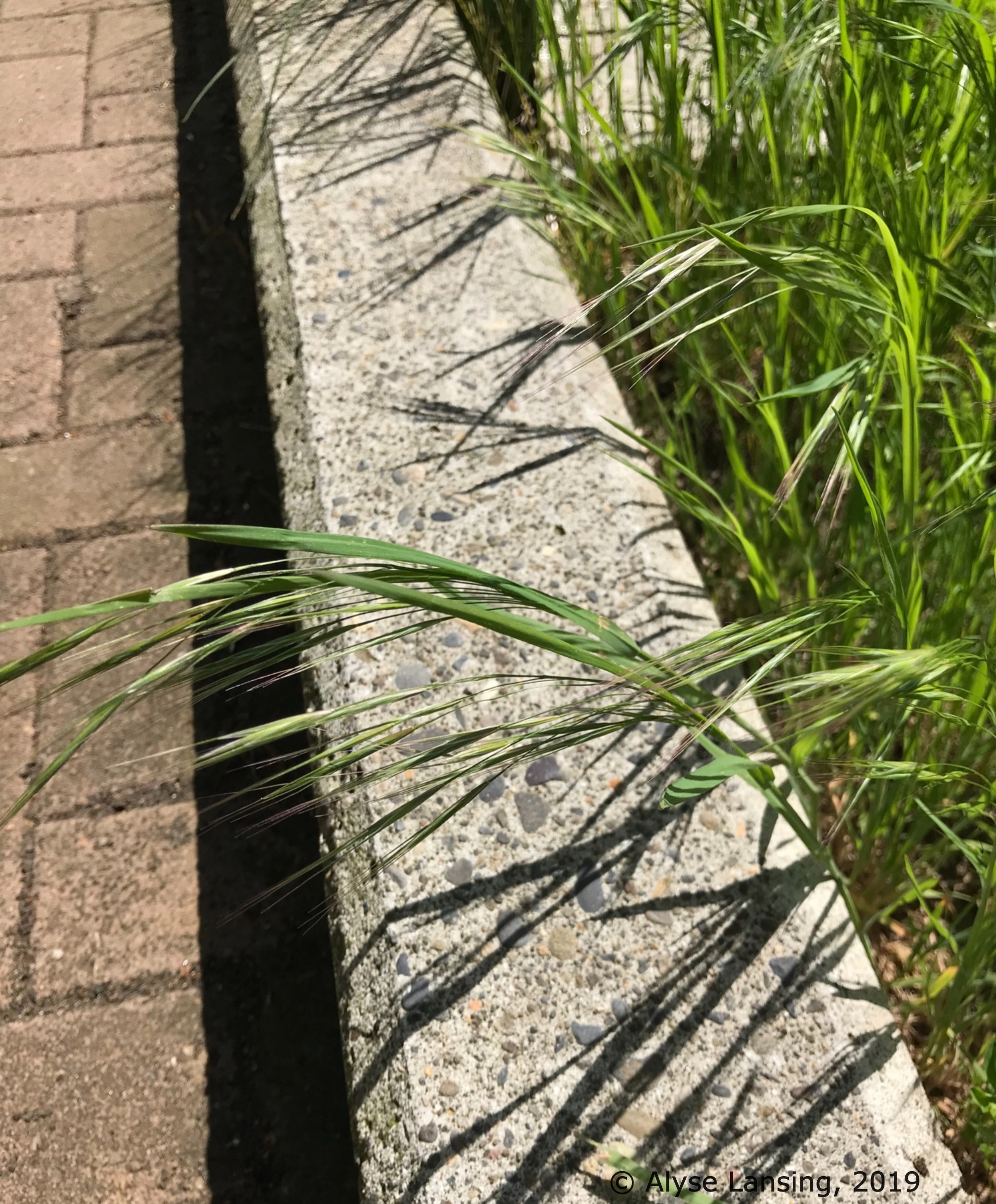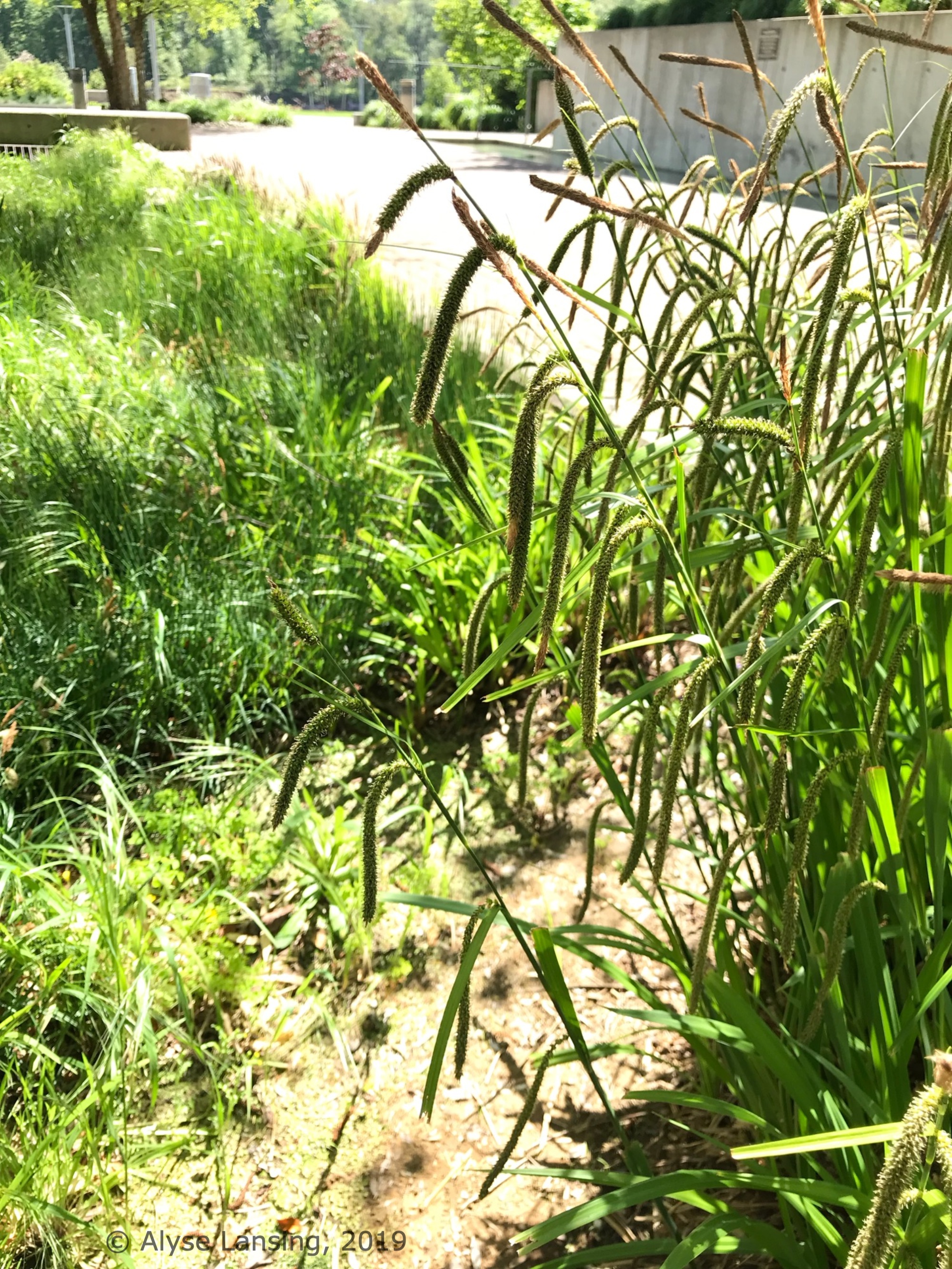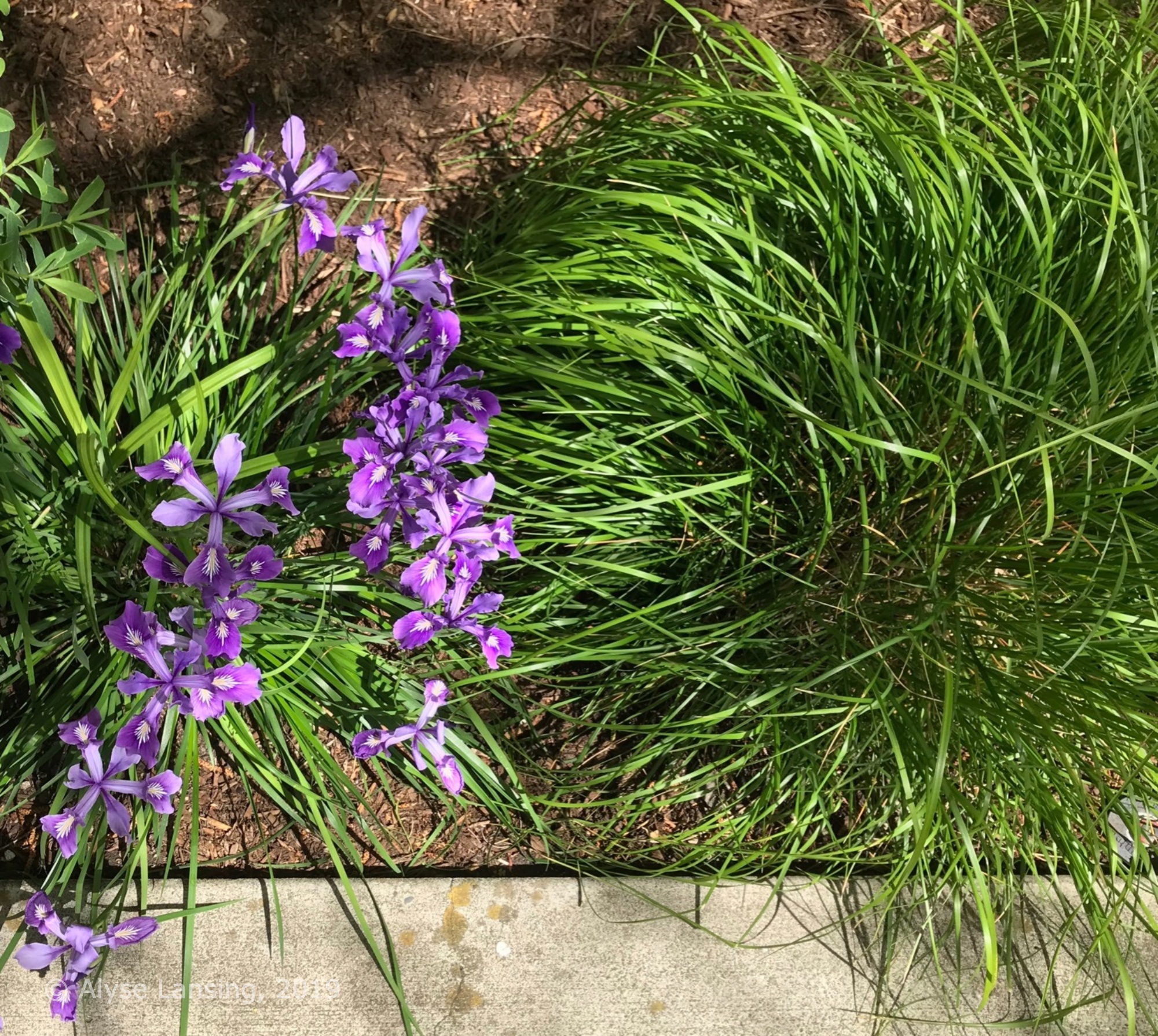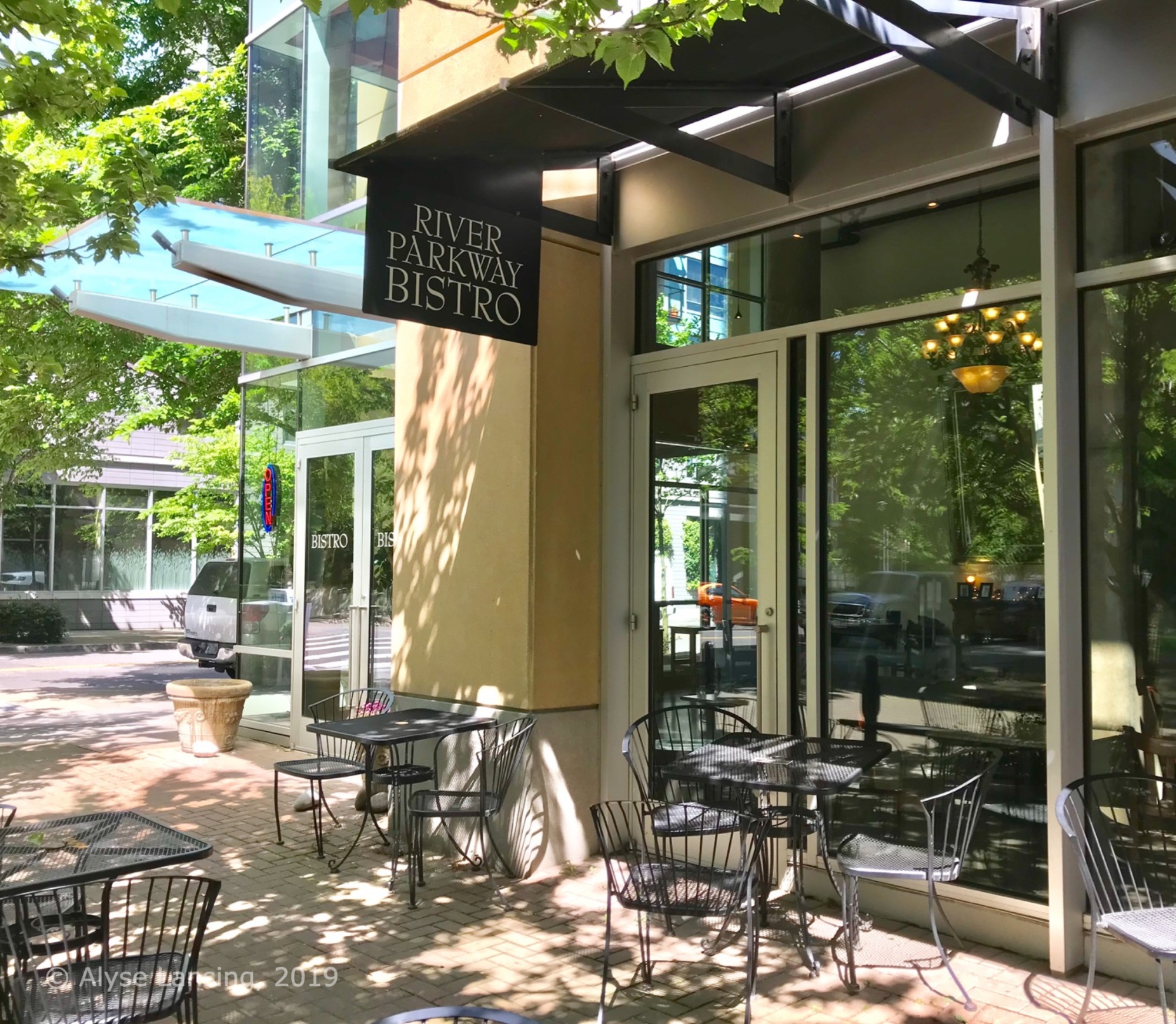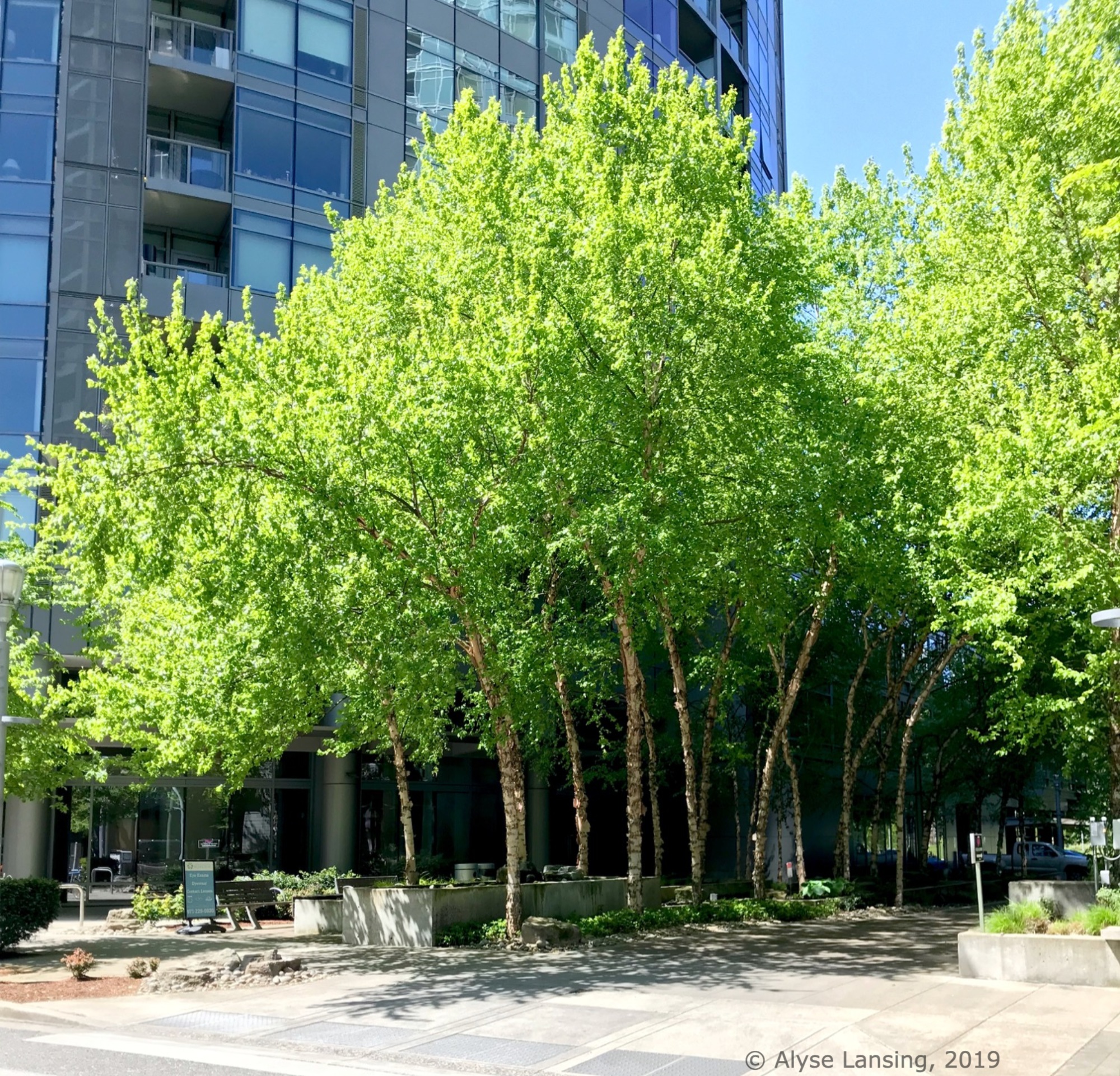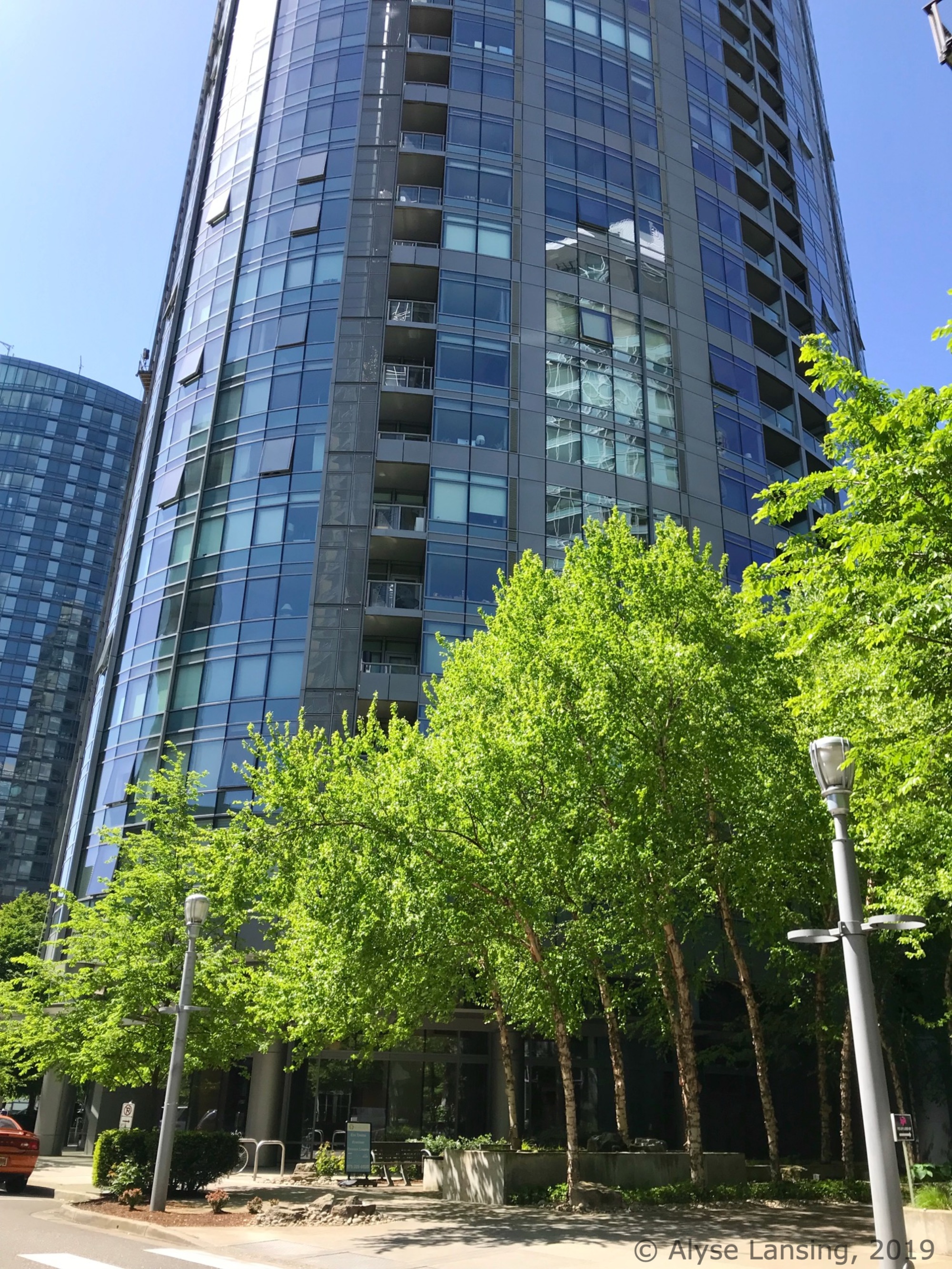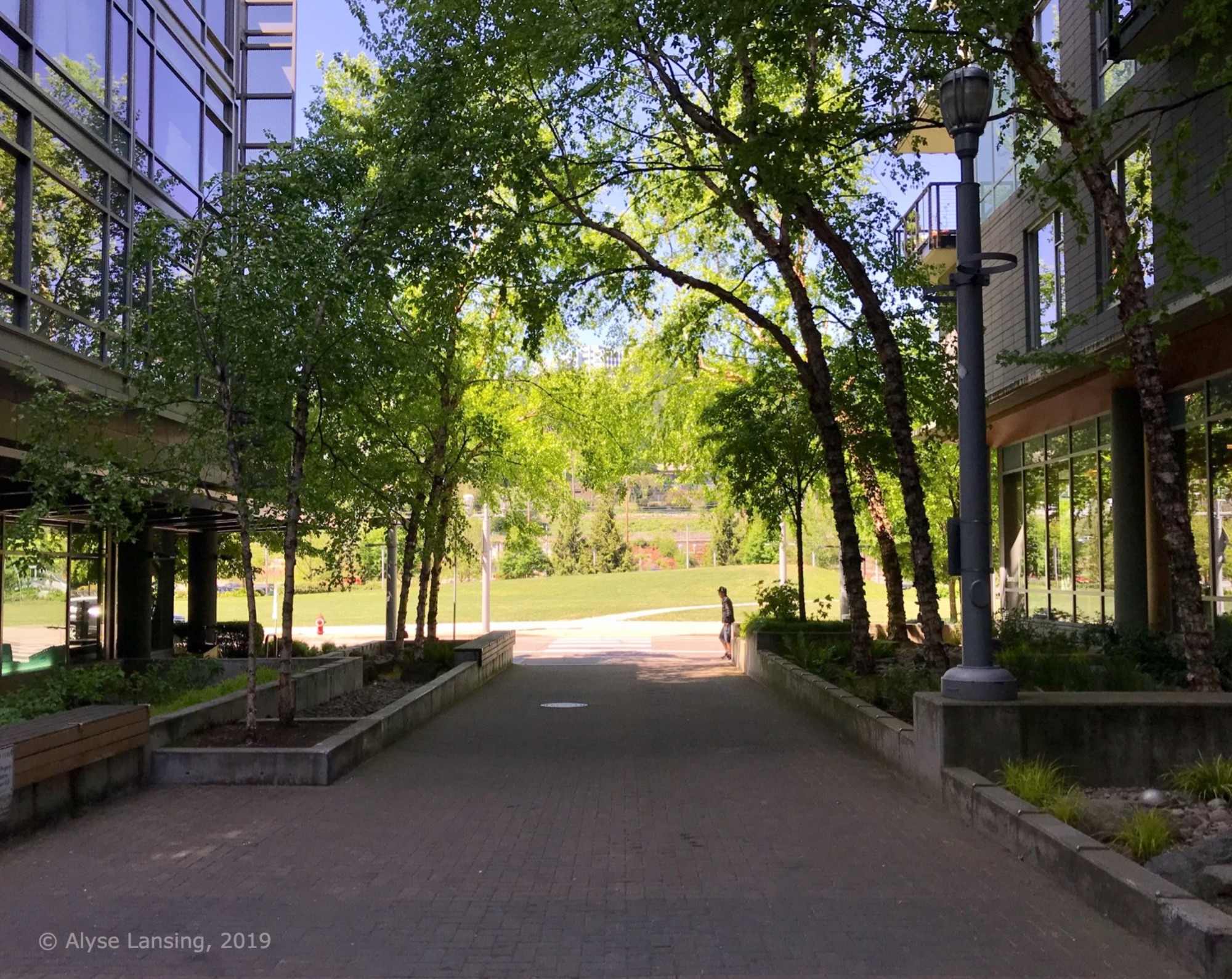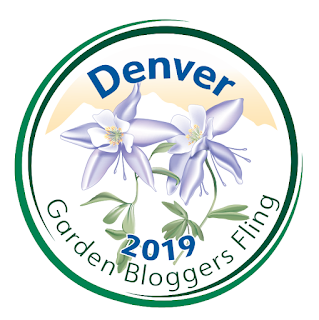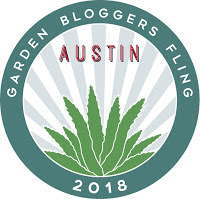South Waterfront: nature in urban spaces
/Creatively using nature in urban common areas
On the morning I came upon this pedestrian-only street in Portland, I had just been reading about using nature in the pockets between buildings in urban settings. The article by Cassy Aoyagi in Pacific Horticulture magazine** espoused using the power of nature’s tricks and beauty in the innumerable neglected strips and bits of land in cities.
Waterlogue app applied to my photograph—river birch on pedestrian-friendly Pennoyer Street, South Waterfront district, Portland.
I happened to be in the South Waterfront area, and looking for the public park that designer friends had recommended as worthy for its use of plants. I had been surprised that plantings were of note there, as South Waterfront has been YEARS in its recovery from industrial wasteland, especially slow in its progress with living things.
But the City has worked hard at the urban planning for this area, I knew. After perhaps 40 years of knowing and looking for the progress that visionaries once saw, I was finally, pleasantly surprised.
Elizabeth Caruthers Park on right. Pennoyer Street bisects the main road, on the left, just out of view.
I did find the park my friends had mentioned, and it was well done. But strolling Elizabeth Caruthers Park, I found myself more attracted to a common area across the street—a place not marked on any maps as a park.
I was drawn into its cathedral-like space, created by the canopy of skyward reaching trees.
I beelined to the grove of river birches on the left, the sun shining through their leaves, and the overlapping concrete planters that elevated their quality.
The size and proportion of the concrete planters was just right. With their trees and plantings, the space felt quite comfortable, even sandwiched between two high rises.
I was surprised how much water was in the planters. They appeared to be both runoff-filtering and a recirculating watercourse. The subtle cascades of water were unexpected, and thus the more delightful, even if they don’t make that great of a photo.
The river birches (Betula nigra ) are lovely here. Along with the cathedral effect, they give the dappled shade that’s important to both people and plants.
Grove of river birch (Pennoyer Street, north side of the John Ross building).
Note a design idea you may be able to use:
a single birch is outside of the straight curb lines. It juts further into the street than the others, thus “blurring the transition” between hardscape and plants, and breaking up the hard lines. This can be a way to make any linear space feel more natural.
River Birch, Betula nigra or cultivar
Directly across from the birch grove is another stormwater-filtering area adjacent to the building. The frosted glass panel and roof of this entry arbor was cool:
In front of each building on Pennoyer Street, the signs give a hint to the greater story—that the park-like spaces on this street are actually private property, belonging to each individual building. Every landscaped piece here is a bioswale of some sort—in existence to filter stormwater runoff from the street and some of the building.
They are private, but they are not fenced off. Because the early designers thought ahead, all the stormwater/landscaped spaces are consistent in placement along the street, and they were wise enough to use the places as “nature relief” for the residents here. The signs try to keep the pets and people out of the spaces (to protect the plants and soil), but it is all still open as streetside common area.
On both sides of Pennoyer, multiple ways of filtering stormwater are showcased:
Right about here, I was thinking: “Portland, I love you.” I am so thankful for the humans who thought outside the box, years ago, and combined architecture, ecology, engineering, and imagination, to think of better ways to build.
I love repeating bridges like this…or any landscape with bridges for that matter. In this scene I enjoy the rhythm and clean lines of the built structures, next to natural forms. I like the feeling of passing over the top of a little garden-way.
Each of the above bridges goes to a condo unit’s front door.
Native Iris tenax in bloom at the front doors of the city homes.
Funny, I hadn’t noticed the house pup in this shot, eyeing the rain gardens he’s so clearly instructed to stay out of. This one did stay out (thank you, human!). Most were indeed law abiding.
Further down, apparently at the back of Atwater Place (I only knew because of the pet signs!), these folks did a fine job with their waterfalls. Water—the calming element—seems to be peaceful in a garden no matter how formal or informal it is. The swale is adjacent (and lower).
Handsome waterfalls outside the Atwater building, on the public walkway Pennoyer Street.
Keeping the populace out of the water as well:
Pennoyer is the district’s central axis between Caruthers Park and a key point on the South Waterfront Greenway. This major bike/walk intersection is accented with art and open space here, but I only grabbed one pic before my pause at the Willamette River.
Then I returned to the multifaceted Pennoyer Street. The wet and dry sides of the street are apparent in this view. Below, the seasonally marshy swales are on the left, and the dryer soils & plants are on the right.
In the bioswales, native grasses for moist sites are thriving:
On the dry side, the grass on the right was used extensively. Not sure what species it is, but it has the look of a Pennisetum. It’s growing with native Iris tenax on the left.
There’s a corner cafe, most welcoming on a warm day.
Stopped for some ice tea at River Parkway Bistro on Pennoyer Street.
As I walked back, the beauty of the river birches showed another dimension from their “front lit” side.
The John Ross building, with its oval shape, rises behind the river birch in their concrete planters.
Walking around to the south side of the building, I came upon another tranquil public area of that building. Two reflection pools enclose one side of a courtyard.
I returned through the foliaged entry from which I came.
The entire journey I just photographed is only two and a half blocks long.
Proud of my city and the developers for making the effort on this one. They’ve brought nature to the former “throw away” concrete islands of past building traditions.
In her Pacific Horticulture article “Nature is a Game Changer,”** Cassy Aoyagi wrote of transforming “the tragedy of the commons.” She spoke of the unseen places, the city hall lawn we walk right by, the highway open-space we ignore, the concrete medians, etc. In South Waterfront, the City and architects did what they could to create the space right to begin with.
“The greatest treasure we earn with smart landscaping decisions is our own vitality and resilience. We are, after all, of nature ourselves, and we feel better, move more, fight less, and live longer, when we spend abundant time in abundant greenery. Even a small patch...makes a difference. Even a view of that small patch can lift hearts and minds.”
In South Waterfront, they did indeed make smart landscaping decisions.
** “Nature is a Game Changer” by Cassy Aoyagi, Pacific Horticulture, Spring 2019, pages 28-33.
Please leave a comment below, if you feel so moved. I love to hear from you.
If you are reading from an email, comment via this link.


